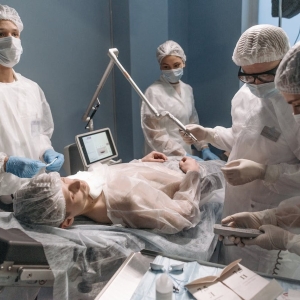4 Benefits of Robotic SurgeryPosted by Lesley Haverford on January 27th, 2024  In the realm of modern medicine, robotic surgery stands as a beacon of advancement, integrating technology with human expertise to enhance surgical outcomes. This cutting-edge approach to surgery has revolutionized various medical procedures, offering numerous benefits over traditional surgical methods. The introduction of robotic systems in surgery has significantly eased the execution of complex procedures. Surgeons can now navigate challenging anatomical areas with greater precision and less physical strain. This advancement is particularly beneficial in surgeries that require intricate manipulation or prolonged duration, ensuring higher precision and less fatigue. 1. Enhanced Precision and ControlOne of the most significant advantages of robotic surgery is the enhanced precision and control it offers surgeons. Robotic systems, like the da Vinci® Robotic Surgery in Miami, FL, are equipped with advanced instruments that can move with a level of accuracy and steadiness that surpasses the human hand. This system allows surgeons to perform complex procedures with increased precision, minimizing the risk of complications associated with human error. The da Vinci® system's high-definition 3D vision and scaled, tremor-filtered movements provide surgeons with unparalleled control. This enhanced precision is particularly beneficial in delicate procedures that require minute incisions and manipulation of tiny structures. The robotic arms' steadiness and dexterity allow for more refined and meticulous surgery. This can be critical in operations like neurosurgery or microvascular procedures. 2. Minimally Invasive ApproachRobotic surgery is inherently minimally invasive. Traditional open surgery often requires large incisions, leading to more pain and longer recovery times. Robotic systems, however, can operate through tiny incisions, leading to several patient-centric benefits. By employing a minimally invasive approach, robotic surgery reduces trauma to the body. This translates to less postoperative pain, smaller scars, and a significantly shorter recovery period. Patients are often able to return to their daily activities much sooner than they would after traditional surgery. This aspect is particularly advantageous for procedures like hysterectomies, prostatectomies, or cardiac surgeries, where traditional methods can be quite invasive. Robotic surgery offers a gentler alternative, promoting quicker healing and reducing the overall impact of the surgical procedure on the patient's body. 3. Increased Safety and Reduced ComplicationsRobotic surgery contributes significantly to patient safety. The precision and control offered by robotic systems minimize the risk of infection and postoperative complications. This is a vital consideration for both patients and healthcare providers. Robotic surgery systems are equipped with advanced imaging technologies that provide surgeons with a detailed view of the surgical area. Enhanced visualization means surgeons can more accurately identify and avoid critical structures, such as blood vessels and nerves, reducing the likelihood of inadvertent damage. In procedures that require intricate dissection or are performed in a confined area, such as certain types of cancer surgery, this improved visualization is a game-changer. It enhances the surgeon's ability to perform the surgery safely and effectively, reducing the risk of complications that can arise from accidental tissue damage. 4. Expanded Surgical CapabilitiesRobotic surgery has expanded the horizons of surgical capabilities; something that allows surgeons to perform complex procedures that might be too challenging or impossible with conventional techniques. The flexibility and dexterity of robotic systems have enabled surgeons to undertake complex surgical interventions with greater confidence. Procedures that once required large incisions and lengthy recovery times can now be performed with minimal incisions, less tissue disruption, and better outcomes. In specialty fields like cardiothoracic surgery or pediatric surgery, robotic systems provide a level of finesse that significantly enhances surgical possibilities. These advances have broadened the range of conditions that can be treated surgically. Therefore, they offer hope to patients who might not have had viable surgical options in the past. Conclusion: Innovation Leads to BettermentRobotic surgery represents a monumental leap in surgical techniques, offering enhanced precision and control, a minimally invasive approach, increased safety and reduced complications, and expanded surgical capabilities. Systems like the da Vinci® Robotic Surgery in Miami, FL, are at the forefront of this revolution, transforming the landscape of surgical care. As technology continues to evolve, the potential of robotic surgery expands, promising even more advancements in the field. This innovative approach is not just about incorporating cutting-edge technology; it's about redefining surgical care to prioritize patient safety, comfort, and outcomes, marking a new era in the world of medicine. Like it? Share it!More by this author |


